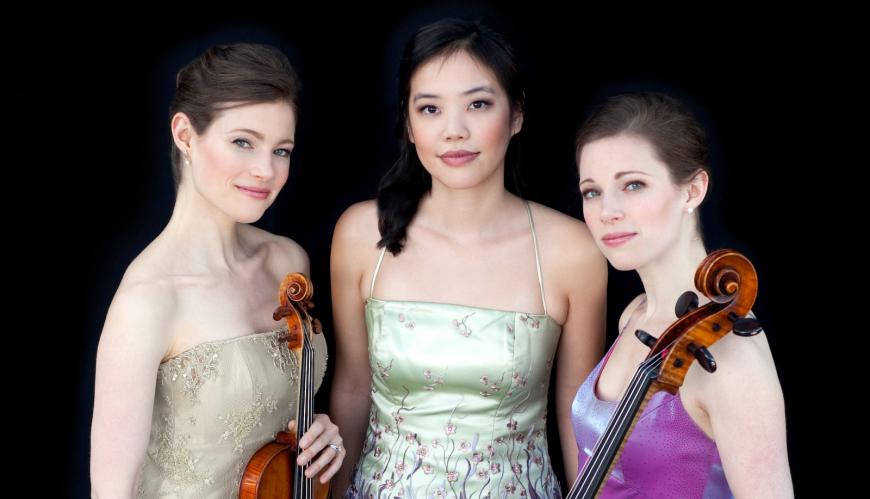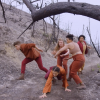
The Claremont Trio has been busy surveying the usual classic repertory for piano trio since being formed at the Juilliard School in 1999, but they also pursue a vigorous agenda of new music. Six of the works they have commissioned, dating from 2008 through 2017, have been collected on the album Queen of Hearts (Tria Records).
The Trio consists of two sisters, Emily (violin) and Julia Bruskin (cello), and pianist Andrea Lam. (In case California readers are wondering, the Claremont name refers to Claremont Avenue in upper Manhattan near where the three musicians live.) They play well, with pinpoint articulation, though their luck in procuring good new music is a hit-or-miss proposition here.
They start things off with Gabriela Lena Frank’s Four Folk Songs, which is really a short four-movement sonata based on Peruvian influences that have been Europeanized for a classical piano trio. “Serenata” is the closest thing to Peruvian music here, with plucked strings imitating a charango and the piano carrying the tune.
In the first part of Sean Shepherd’s three-movement trio, Hopscotch, the line jumps around and repeatedly races back to begin hopping again, ending quietly and aridly at some length. “Calderwood” is the slow movement; “slow waltz of the robots” is a stiff-jointed dance with Stravinsky-like gestures in the strings.
The title of Judd Greenstein’s A Serious Man is meant to be taken seriously but not literally, for after a quiet beginning, it becomes a fond portrait in 16 minutes of the composer’s uncle in all his jovial, generous, pensive moods, though I find that the level of invention begins to flag past the two-thirds mark.
Based on chalk and pastel miniature pictures, the first of Helen Grime’s Three Whistler Miniatures, “The Little Note in Yellow and Gold,” opens delicately, gradually coming into view with droplets from the piano and rustlings from the strings, picking up speed toward the close. “Lapis Lazuli” is a scherzo with a contemplative middle section, and “The Violet Note” loses my attention entirely with its diffuse, random-seeming rhetoric.
Nico Muhly’s single-movement Common Ground begins with promising agitated, abrupt gestures, and then it calms down with a “pastoral” section featuring long lines for the cello. It doesn’t really get back on track until the last 30 seconds of the piece.
Finally, Kati Agócs’s Queen of Hearts opens with a simple chaconne consisting of three-note phrases, the pattern of which is fleshed out and blooms attractively. Eventually it accelerates into runs and rivulets of sound before subsiding into gentler three-note phrases before ending grandly on a final chord. Of the six pieces in this streaky collection, I like this one best.





